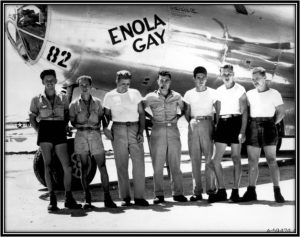B-29 History Twofer
Contributor: Barry Fetzer
Sources: Wikipedia, History.com, warfarehistorynetwork.com
With this edition of “This day in aviation history” we’re bookending today with a two-events “twofer”, one historical event that occurred yesterday and one history-making event that will occur this weekend.
Happy History!
In a nod to the success and valiant achievements of the Boeing B-17 Flying Fortress, the B-29 Superfortress was named. Yesterday, according to History.com, “was the anniversary of the debut flight in Seattle, Washington on September 21, 1942 of this iconic U.S. bomber, also a Boeing product. The Superfortress was the largest bomber used in the War by any nation.
The B-29 was conceived in 1939 by General Hap Arnold, who was afraid a German victory in Europe would mean the United States would be devoid of bases on the eastern side of the Atlantic from which to counterattack. A plane was needed that would travel faster, farther, and higher than any then available, so Boeing set to creating the four-engine heavy bomber. The plane was extraordinary, able to carry loads almost equal to its own weight at altitudes of 30,000 to 40,000 feet. It also sported the first radar bombing system of any U.S. bomber.
 Bombs Away! Courtesy of https://warfarehistorynetwork.com/article/fire-from-the-sky
Bombs Away! Courtesy of https://warfarehistorynetwork.com/article/fire-from-the-sky
The Superfortress made its test run over the continental United States on September 21, but would not make its bombing-run debut until June 5, 1944, against Bangkok, in preparation for the Allied liberation of Burma from Japanese hands. A little more than a week later, the B-29 made its first run against the Japanese mainland. On June 14, 60 B-29s based in Chengtu, China, bombed an iron and steel works factory on Honshu Island. While the raid was less than successful, it proved to be a morale booster to Americans, who were now on the offensive.
 B-29 Nose Art
B-29 Nose Art
Meanwhile, the Marianas Islands in the South Pacific were being recaptured by the United States, primarily to provide air bases for their new B-29s—a perfect position from which to strike the Japanese mainland on a consistent basis. Once the bases were ready, the B-29s were employed in a long series of bombing raids against Tokyo. Although capable of precision bombing at high altitudes, the Superfortresses began dropping incendiary devices from a mere 5,000 feet, firebombing the Japanese capital in an attempt to break the will of the Axis power. One raid, in March 1945, killed more than 80,000 people. But the B-29’s most lethal missions would come in August, as it was the only plane capable of delivering a 10,000-pound bomb—the atomic bomb. The Enola Gay and the Bock’s Car took off from the Marianas, on August 6 and 9, respectively, and flew into history.”
 The B-29 Enola Gay and flight crew. Courtesy of the Department of Defense.
The B-29 Enola Gay and flight crew. Courtesy of the Department of Defense.
For more on the B-29’s history and legacy, see the YouTube video here: https://www.youtube.com/watch?app=desktop&v=D8WjJsvqMa8
And…
Asteroid Sample Return
From the news blog 1440 Daily Digest DailyDigest@email.join1440.com: “NASA is poised to make a historic delivery this weekend of the biggest sample of rocks and dust from an asteroid after a seven-year mission in space. The OSIRIS-REx spacecraft will fly by Earth Sunday to drop off a capsule—containing the roughly half-a-pound sample from the asteroid Bennu—near Dugway, Utah. If successful, it will be the first US mission to return an asteroid sample to Earth. Livestream the event here (10 am ET).
The craft launched in 2016, arrived at Bennu in 2018, and orbited the asteroid for two years as it took measurements and searched for a landing spot. In 2020, the craft grabbed a sample of Bennu in a “touch and go” move and began its return to Earth in 2021.
Bennu—whose diameter is roughly the height of the Empire State building—circles the sun in orbit roughly between Earth and Mars (see overview). Studying its composition may reveal insights into the early formation of the solar system from nearly 4.5 billion years ago—something not possible with meteorites, which get contaminated during their fall to Earth.
OSIRIS-REx will explore the asteroid Apophis next. NASA will launch two more asteroid missions this fall.”







